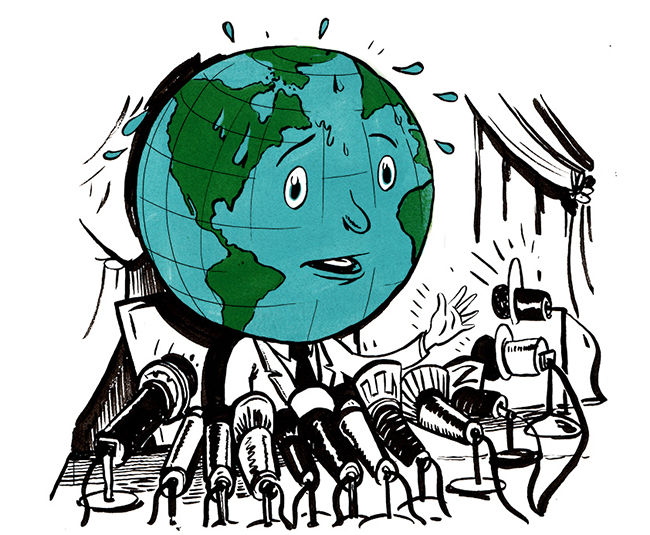ZEITGUIDE TO BAD NEWS

Elections always prompt a lot of Monday morning quarterbacking — usually from the political parties. But after the election of Donald Trump, much of the judgment has been focused on the role the news media and social media played in this election.
In particular, how did so many get it so wrong? At the beginning of the day Tuesday, The New York Times pegged the changes of a Clinton win at 85%. Nate Silver’s FiveThirtyEight had her chances over 70% (the fact he gave Trump any chance of winning at all was a source of derision). Nearly all polls failed to reflect the reality of what was happening in the electorate.
But the problems go deeper than survey models, or even the horse-race style coverage that dominates election news. “One way to think of the job journalism does is telling a community about itself, and on those terms the American media failed spectacularly this election cycle,” wrote Joshua Benton, director of the Nieman Journalism Lab.
For some, this failure results from an overconcentration of news outlets in those cities associated with the “coastal elites.” That concentration has only been heightened by the rise of digital media outlets like Buzzfeed, Vice, Vox, etc. In 2004, 1 in 8 reporting jobs were in New York, Washington D.C. or Los Angeles. By 2014, that proportion became 1 in 5.
With layoffs and budget cuts ongoing at newspapers, this problem is likely to be further exacerbated. One friend of ours who works at a major metro daily observed how the number of national bureaus has shrunk. Instead of basing reporters in 10 or 12 cities across the country, they’re in five. Parachuting in to write stories on the Plains states or Midwest might be fine for covering a tornado, but it seems to have missed a political tidal wave.
“This would be a great time for American media companies to revisit the idea that all their employees should live in New York, D.C. and San Francisco,” said Mike Riggs from Freethink Media.
The problem, of course, isn’t just with what’s being written. It’s also what’s being read. This election cycle seems to offer confirmation of the dangers of our social media filter bubble. “Your filter bubble is this unique, personal universe of information created just for you by this array of personalizing filters,” writes Eli Pariser in his 2011 best seller, “The Filter Bubble: What the Internet Is Hiding from You.”
Facebook’s algorithms, after all, aren’t designed to weight stories based on their validity. They’re designed to show people what they want to see: cat videos or, more damaging, articles of fake news. This is not a small problem: two-thirds of U.S. adults are on Facebook, and two-thirds of them say that’s where they access news. The hashtags and self-filtering on Twitter — which recently listed itself as a “news” app on iTunes — is perhaps even worse.
When “each story is algorithmically selected based on the likelihood that you will engage with it,” John Herman writes at The Awl, “content-marketed identity media speaks louder and more clearly than content-marketed journalism, which is handicapped by everything that ostensibly makes it journalistic — tone, notions of fairness, purported allegiance to facts and context over conclusions.”
Is it time for social media companies to rethink the role they and their algorithms play in keeping the public well informed? Or do we, on an individual level, need to be more responsible for stepping outside of our own red- or blue-tinted bubbles?
Many were guilty of a sentiment perhaps best expressed by film critic Pauline Kael after Richard Nixon’s reelection in 1972. “I live in a rather special world,” she told The New York Times then. “I only know one person who voted for Nixon. Where they are I don’t know. They’re outside my ken.”
